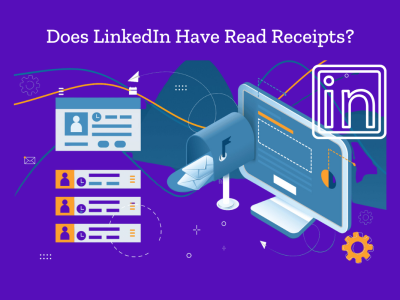
Markets are saturated with countless options for consumers, the key to sustained growth and profitability lies in prioritizing the needs and interests of customers. Every decision made by a business, whether it pertains to product development, marketing strategies, or customer service initiatives, should revolve around enhancing the customer experience. When customers are at the heart of your business strategy, you create a loyal customer base and pave the way for sustainable growth and increased profits.
What is Customer Feedback?
Customer feedback serves as a cornerstone for any customer-centric business strategy. It encompasses a spectrum of insights, opinions, and suggestions provided by customers regarding their interactions with your organization. This feedback can be broadly categorized into two main types: direct and indirect.
1. Direct Feedback: This type of feedback is actively solicited from customers through methods like surveys, focus groups, and interviews. Businesses have control over the format and content of these interactions, allowing them to gather specific insights tailored to their needs.
2. Indirect Feedback: Unlike direct feedback, indirect feedback is unsolicited and often requires proactive efforts from businesses to collect. It includes sources such as social media activity, online reviews, and referrals, which offer valuable insights into customer sentiments and preferences.
The Importance of Customer Feedback
Customer feedback is crucial for exceptional call center performance and customer satisfaction. Research shows that positive experiences with call center services significantly impact customer retention. Outstanding service is defined by a greatness rating of 65% or higher, but only 5% of call centers achieve this. The absence of feedback hampers efforts to provide superior service. Feedback allows benchmarking against industry standards, strengthens relationships, identifies areas for improvement, aids in service recovery, enhances brand reputation, boosts profits, aids in agent coaching, and motivates agents.
Methods for Gathering Customer Feedback
To effectively harness the power of customer feedback, businesses must employ diverse methods for soliciting and collecting insights from their customers. Here are six effective methods for gathering customer feedback:
1. Surveys
Employing surveys is an effective method to obtain precise responses to targeted inquiries. They offer a straightforward means to reach out to large respondent pools and gather valuable insights.
Deploying Customer Satisfaction surveys (CSAT) following specific touchpoints enables feedback collection on particular aspects of the customer experience, facilitating the resolution of process-related issues. For instance, sending out a survey to gauge customer opinions on the delivery process immediately after a product delivery is opportune.
Periodically sending out Net Promoter Score (NPS) surveys, such as every six months, provides overarching feedback on customers’ overall perceptions of your company, regardless of specific milestones or touchpoints.
2. Emails
Utilizing email as a feedback-gathering tool is potent. Sending emails post-purchase or after significant touchpoints like interactions with customer service agents or subscription cancellations is opportune.
These emails are typically automated, streamlining the process further.
Surveys embedded within these emails should be brief, minimizing user effort. Ideally, they should be directly accessible within the email, eliminating the need for external navigation.
3. Interviews and Focus Groups
Conducting interviews and focus groups yields direct and valuable feedback, albeit on a smaller scale due to budget and logistical constraints.
While fewer participants provide feedback, the insights gleaned are often more profound. Direct interaction allows for detailed questioning and comprehensive responses.
Preparation and maintaining focus during interviews or focus groups are crucial to extracting the desired answers. While slight tangents may offer interesting insights, straying too far off-topic risks missing valuable feedback.
4. Social Media
Expressing opinions about brands on social media is increasingly prevalent. Social platforms facilitate rapid dissemination of news, with negative brand reviews capable of virality.
Monitoring both owned social media channels and external brand chatter enables the prompt detection of emerging issues and facilitates proactive customer engagement.
Brand presence on social platforms is expected by customers, with studies indicating improved brand perception when responding to social media complaints.
5. Website Analytics
Analyzing website traffic and customer navigation patterns provides valuable insights into customer preferences and sentiments toward products and services.
Identification of pages with extended dwell times or high abandonment rates offers indications of customer preferences and pain points within the customer journey.
Utilizing appropriate analytics tools is imperative, considering external factors influencing web usage, and contextualizing insights accordingly.
6. Free-Text Feedback
Various methods, such as in-app popups, feedback buttons, and external feedback sites, allow customers to provide open-ended feedback.
Presenting customers with a text box encourages them to articulate their thoughts freely, whether describing issues or detailing product pros and cons.
While free-text feedback may sometimes be ambiguous, it can also offer unexpected and valuable insights beyond what is typically solicited.

Customer Service Examples
Below are 10 examples of good customer service experiences showcasing methods to improve each interaction with customers:
1. Personalized Greetings: At a local diner, a waiter greets regular customer Jim by name, and engages in small talk about shared interests, making Jim feel valued and appreciated.
2. Employee Wellness Priority: A retail clothing company adjusts employee schedules during busy periods, allowing time for creative tasks and implementing incentive programs to alleviate stress.
3. Turning Complaints into Opportunities: A shop resolves a customer’s complaint about unclear toy instructions with empathy, offering a replacement and reporting the issue to management for improvement.
4. Surprising Customers: A coffee shop gives branded t-shirts to loyal customers, generating excitement and social media buzz, ultimately increasing the shop’s visibility.
5. Minimizing Perceived Risk: A boutique clothing shop offers an online style quiz, a lenient return policy, and free returns, reducing customer concerns about trying new styles.
6. Follow-up Gestures: A wellness spa sends personalized thank-you cards, and birthday coupons, and introduces a loyalty program to maintain customer relationships.
7. Comfortable Environment: A bookstore transforms into a community hub by offering snacks, comfortable seating, and children’s activities, creating a welcoming atmosphere.
8. Convenient Customer Support: To reduce response times, an auto body business enhances customer support with omnichannel options, including live chat and dedicated email.
9. Self-Service Options: A hardware company improves its website with an extensive knowledge base, videos, and FAQs to empower customers to find solutions independently.
10. Feedback Solicitation: A restaurant chain gathers feedback through surveys, leading to the addition of popular dessert options based on customer preferences.
Wrapping Up
Effective customer feedback strategies are vital for success in competitive markets. Placing customers first provides insights crucial for growth and profitability. Diverse methods like surveys, interviews, and social media monitoring offer valuable data. Outstanding customer service enhances satisfaction and loyalty, including personalized interactions and proactive problem-solving. Ultimately, prioritizing customer feedback drives differentiation and sustainable growth in today’s business landscape.







